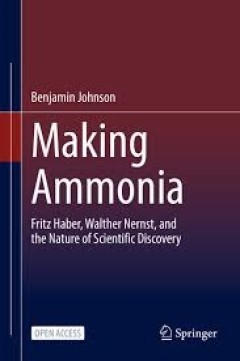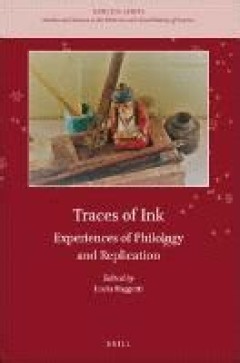Filter by

A History of Scientific Journals : Publishing at the Royal Society, 1665-2015
Modern scientific research has changed so much since Isaac Newton's day: it is more professional, collaborative and international, with more complicated equipment and a more diverse community of researchers. Yet the use of scientific journals to report, share and store results is a thread that runs through the history of science from Newton's day to ours. Scientific journals are now central to …
- Edition
- -
- ISBN/ISSN
- 9781800082342
- Collation
- 666 hlm
- Series Title
- -
- Call Number
- -

A History of Genomics across Species, Communities and Projects
This open access book offers a comprehensive overview of the history of genomics across three different species and four decades, from the 1980s to the recent past. It takes an inclusive approach in order to capture not only the international initiatives to map and sequence the genomes of various organisms, but also the work of smaller-scale institutions engaged in the mapping and sequencing of…
- Edition
- -
- ISBN/ISSN
- 9783031061301
- Collation
- 380 hlm
- Series Title
- -
- Call Number
- -

A History of Force Feeding : Hunger Strikes, Prisons and Medical Ethics, 1909…
It is the first monograph-length study of the force-feeding of hunger strikers in English, Irish and Northern Irish prisons. It examines ethical debates that arose throughout the twentieth century when governments authorised the force-feeding of imprisoned suffragettes, Irish republicans and convict prisoners. It also explores the fraught role of prison doctors called upon to perform the proced…
- Edition
- -
- ISBN/ISSN
- 9783319311135
- Collation
- 267 hlm
- Series Title
- -
- Call Number
- -

A Cultural History of Chemistry in Antiquity
This open access bookA Cultural History of Chemistry in Antiquity covers the period from 3000 BCE to 600 CE, ranging across the civilizations of the Mediterranean and Near East. Over this long period, chemical artisans, recipes, and ideas were exchanged between Mesopotamia, Egypt, Phoenicia, Greece, Rome, and Byzantium. The flowering of alchemy in the Middle and Early Modern Ages had its roots …
- Edition
- -
- ISBN/ISSN
- 9781350251472
- Collation
- 312 hlm
- Series Title
- -
- Call Number
- -

"Cap" Cornish, Indiana Pilot: Navigating the Century of Flight
Clarence "Cap" Cornish was an Indiana pilot whose life spanned all but five years of the Century of Flight. Born in Canada in 1898, Cornish grew up in Fort Wayne, Indiana. He began flying at the age of nineteen, piloting a "Jenny" aircraft during World War I, and continued to fly for the next seventy-eight years. In 1995, at the age of ninety-seven, he was recognized by Guinness World Records a…
- Edition
- -
- ISBN/ISSN
- 9781612493374
- Collation
- -
- Series Title
- -
- Call Number
- -

Publishing Sacrobosco’s De sphaera in Early Modern Europe : Modes of Materi…
- Edition
- -
- ISBN/ISSN
- 978-3-030-86600-6
- Collation
- -
- Series Title
- -
- Call Number
- -
- Edition
- -
- ISBN/ISSN
- 978-3-030-86600-6
- Collation
- -
- Series Title
- -
- Call Number
- -

Making Ammonia : Fritz Haber, Walther Nernst, and the Nature of Scientific Di…
- Edition
- -
- ISBN/ISSN
- 978-3-030-85532-1
- Collation
- -
- Series Title
- -
- Call Number
- -
- Edition
- -
- ISBN/ISSN
- 978-3-030-85532-1
- Collation
- -
- Series Title
- -
- Call Number
- -

Traditions of Analysis and Synthesis
This open access book provides a fresh perspective on analysis and synthesis across several areas of inquiry. The two operations form a primary basis of modern laboratory science, ranging from the spectrographic analysis used in practically every scientific discipline today, to the naming of entire disciplines, such as synthetic organic chemistry. Despite their acknowledged significance, howeve…
- Edition
- -
- ISBN/ISSN
- 9783031763984
- Collation
- VII, 402 hlm; ill., lamp.,
- Series Title
- -
- Call Number
- -

Traces of Ink : Experiences of Philology and Replication
Traces of Ink. Experiences of Philology and Replication is a collection of original papers exploring the textual and material aspects of inks and ink-making in a number of premodern cultures (Babylonia, the Graeco-Roman world, the Syriac milieu and the Arabo-Islamic tradition). The volume proposes a fresh and interdisciplinary approach to the study of technical traditions, in which new results …
- Edition
- -
- ISBN/ISSN
- 9789004444805
- Collation
- 216 hlm; ill., lamp.,
- Series Title
- Nuncius Series, Volume: 7
- Call Number
- -

Bearing Witness
This open access book is the biography of one of Britain’s foremost animal welfare campaigners and of the world of activism, science, and politics she inhabited. In 1964, Ruth Harrison’s bestseller Animal Machines triggered a gear change in modern animal protection by popularising the term ‘factory farming’ alongside a new way of thinking about animal welfare. Here, historian Claas …
- Edition
- 1
- ISBN/ISSN
- 978-3-030-62792-8
- Collation
- oer.unej.ac.id
- Series Title
- Palgrave Studies in the History of Social Movements
- Call Number
- -
 Computer Science, Information & General Works
Computer Science, Information & General Works  Philosophy & Psychology
Philosophy & Psychology  Religion
Religion  Social Sciences
Social Sciences  Language
Language  Pure Science
Pure Science  Applied Sciences
Applied Sciences  Art & Recreation
Art & Recreation  Literature
Literature  History & Geography
History & Geography